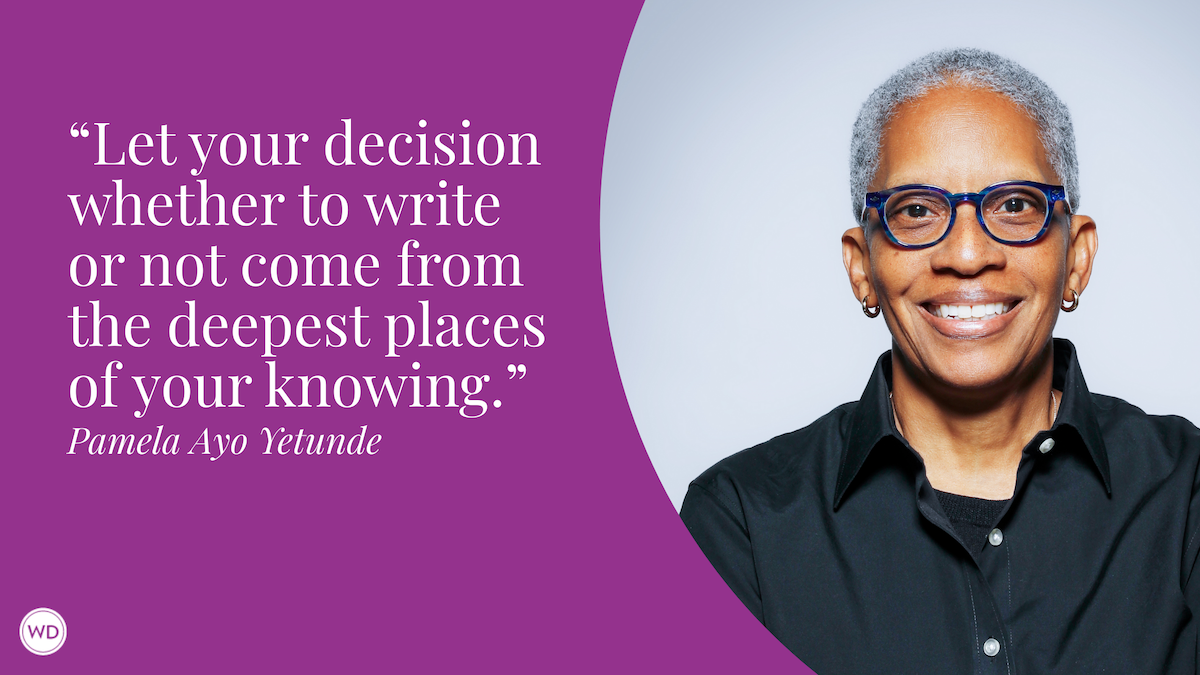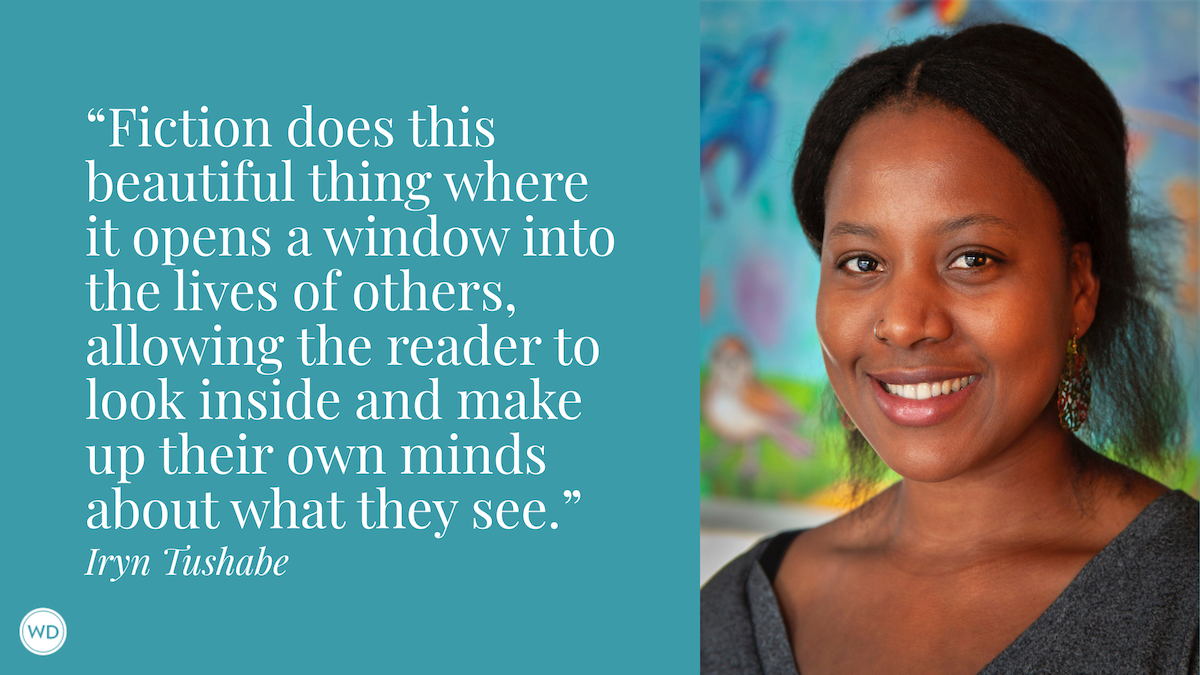Back to Basics: Benefits of Writing With a Pen & Notebook
Ran Walker shares 10 reasons why going “old school” with notebooks is the best technology for writers.
Every year, there is some new form of technology introduced into the “writersphere,” and each one seems as though it has the ability to help you write in a way that you have never written before (or would ever have thought to write). Many of them, while well intentioned, usually require the writer to explore a learning curve in an effort to make use of the technology in a productive and meaningful way. For those of us who can remember using typewriters, there was indeed a learning curve there, just as it was for word processors, computers, and wide array of more portable writing devices. Even now, there are the numerous software programs that allow us to organize, format, and export our writing into other forms, and each one has a learning curve that could be daunting to its user.
A few years ago, while walking through the Poe Museum in Richmond, Va., with my wife and daughter, I came across a notebook in which Edgar Allan Poe had written various notes on a project. I found myself staring at his handwriting, realizing that this particular technology was still something widely available in the present day and that I had not given it even a second thought up until that point. I suddenly found myself not only curious to see other authors’ notebooks, but also to buy my own notebook and begin using it as a serious writing tool.
Since then, I have filled more than 30 notebooks and actively keep one going at all times. By using this “old school” technology, I have been able to understand why a notebook and a pen (or pencil) can often be the best technology for writers as they begin new writing projects.
Here are a few things that I have learned from using paper notebooks:
Your brain actually works differently when you are writing by hand.
In referencing Nietzsche’s Writing Ball in his article “How Technology Has Changed the Way Authors Write,” Matthew Kirschenbaum states that the feel of writing tools in your hands affects how you use them. Even the differences between a pen and pencil can affect how we express ourselves on the page. Furthermore, our brains work differently, depending on the type of writing instrument we choose to use. Studies from The University of Tokyo show that there is actually stronger brain activity from writing on paper versus writing on a tablet or smart phone. This is not, of course, to say that writing on a computer or mobile device prevents you from being able to write your novel or short story. It does, however, suggest that if you were to write the same ideas in a notebook, they would come out differently than if you had typed them on your computer. This can be helpful to many writers who find themselves suffering from writer’s block or those who are trying to find a new way to enter into their creative processes.
Using a notebook requires you to write slower and often more deliberately than you would on a computer.
Whether you are printing things by hand or writing in cursive, chances are that you are writing at a slower pace than you would if you were typing on a computer. That slower pace is not necessarily a bad thing, though. As you write each word, it forces you to make deliberate choices about how you want to communicate your ideas. This often results in “tighter” writing, writing that would require less editing after the fact. Also, the idea that the notebook page has a finite amount of space helps you to have a visual and tactile connection to the work and the way in which your words are ultimately composed on the page.
Using a notebook allows you to be completely unplugged and untethered.
Not to beat a dead horse here, but one of the primary concerns most writers voice when writing from their computers is that they are often distracted by email, social media alerts, and any number of applications or streaming services that populate their devices. Notebooks don’t have this issue. Not only do they not connect to the World Wide Web, they also do not require batteries to keep them powered. I don’t say this to romanticize the notion of lying under a tree with a notebook in hand or leaning against the window on an Amtrak powering its way through New England; it is merely a fact that you can take out a notebook where you are and begin to write. One might argue that the same can be said of a smartphone, but then I would recommend taking a look at my first point. Personally, while I do use my smartphone to make notes from time to time, I enjoy the tactile sensation of placing those ideas directly onto the page. I find that when I write things that way, I remember them in a more intimate way.
The obvious “con” to not using a connected device is the risk of losing what you have written. With mobile devices or laptops, your work can be backed up to a cloud service and retrieved from any other device later on. If you lose a notebook, though, it is, unfortunately, lost. There’s not really any way around this, but if it is any consolation, the chances of you losing a notebook are on par with your chances of losing the keys to your car or house, which is (I hope) highly unlikely.
I have found that the pros often outweigh the con, and as a result, I keep a notebook with me everywhere I go, always ready in the event that the Muse finds me out and about.
Many famous authors write their first drafts in longhand using notebooks.
Seeing Edgar Allan Poe’s notebook had a profound effect upon me and my writing; it was a sort of validation that there is value in writing your ideas down on paper. Since then, I have come to understand that many writers use notebooks for first drafts, a list that includes, but is not limited to, August Wilson, Stephen King, Doris Lessing, Toni Morrison, Ernest Hemingway, Neil Gaiman, Susan Sontag, Elmore Leonard, and Joan Didion. In fact, there are thousands of writers who employ this method of first drafts for various reasons. I encourage you to check to see if one of your favorite authors uses or has used this technique. You might very well be surprised at what you discover.
You can perform an edit of your work as you transcribe from your notebook to your computer.
Yes, you will eventually need to type everything that you’ve handwritten—but that’s not necessarily a bad thing. I have found that when you transcribe things to your word processing application, you usually make corrections and alterations as you type. These changes serve as one of the first real edits of your work. It gives you the opportunity to consider what you’ve written and make adjustments for what you hope the final version of the work will be. This shifting between media also works once you’ve completed edits on the electronic version, as a printed-out copy of a final draft helps you to find errors that you might have missed in its previous medium.
It allows you to accumulate “papers.”
While this might not be of concern to many writers at this point, it is worth considering as you build your writing legacy. Think of a writer whom you admire. Now, consider that some university or library may have acquired the “papers” of that particular writer. Maybe one day a university or library will want to acquire your papers. Would they be acquiring digital documents and PDFs, or would they be acquiring actual papers, where scholars can review your own handwritten notes and observations? Might your own notes inspire another writer the same way that Edgar Allan Poe’s longhand writings inspired me?
There is affirmation that comes from seeing the immediate physical results of your efforts.
While you can easily see your word count and page count while typing in a word processing program, there is something magical in seeing the physical accumulation of pages as you create them. Writing longhand in a notebook allows you to see yourself creating page after page of your work. I have found that seeing a stack of handwritten pages serves as motivation, as it shows me what I have already done and that I have the ability to do even more.
It can work in tandem with your existing writing methods.
By writing in a notebook, it doesn’t mean you have to give up other forms of writing. You can use it to complement what you already do. It is yet another way to augment your entry into a story. For example, if I have elected to start a story on the computer, but I got stuck in the writing of the draft, switching over to a notebook and writing longhand has often helped me to unlock my creative process, allowing me to return to writing in my original medium with much more confidence. This also works well for outlining upcoming chapters or making observations about the work in general, such as items that relate back to the book’s theme or even what the best sequence of the book’s contents might be.
There is no learning curve when writing longhand in a notebook.
Unlike the learning curve a writer might have to endure to master the latest version of a particular novel-writing software, a notebook only requires a writing instrument to begin working. While a case could be made for either a pen or a pencil, one thing is clear: Nearly all writers have had to write on paper at some point in their lives. Even though it might have been a while for some of us, it is important to have patience as you begin writing by hand again. As I mentioned in Point 2 about writing slowly, you will also have to give the muscles in your hands a chance to rebuild their strength. Still, it is definitely worth it! With a notebook and writing instrument, the writer need only open to a blank page and start working. The immediacy of working can help to stimulate the creative writing process much quicker, and it also removes the anxiety that can accompany the pressure of learning a software program in which you have a noticeable financial investment.
Writing in a notebook might be one of the least expensive ways to write at this point.
Granted, a person could write in an expensive leather-bound journal, using a Montblanc fountain pen (expenses that might very well exceed the cost of a laptop computer), those longhand writers would be the outliers for notebook writing. Most notebooks and pens/pencils can be obtained for a few dollars. They are significantly less expensive than using any other type of technology for writing. With such a low financial entry point, it nearly eliminates the entry point barrier to writing creatively. Even if a writer were to select a more upscale journal and writing instrument, the odds are that those expenses would pale in comparison to the expenses associated with a laptop or tablet device and the accompanying writing software. The paper notebook clearly democratizes the writing process, leveling the playing field for people of all backgrounds so that everyone can have access to the creative writing process.
While it is nearly impossible to circumvent using some type of computing device in the writing process at this point, that does not mean that the process has to be limited to those devices. Give notebooks a try. Give your hands a chance to develop the muscle memory of holding a pen or pencil. Give yourself a chance to explore your ideas in a different way. That is one of the beautiful things about being a writer: We can always find new ways of telling our stories and sharing them with the world.
Ran Walker (he/him) is the author of 25 books. His short stories, flash fiction, microfiction, and poetry have appeared in a variety of anthologies and journals. He is the winner of the Indie Author Project's 2019 National Indie Author of the Year Award (selected by judges from Library Journal, Publishers Weekly, IngramSpark, St. Martin's Press, and Writer's Digest), the 2019 Black Caucus of the American Library Association Best Fiction Ebook Award, the 2018 Virginia Indie Author Project Award for Adult Fiction, and the 2021 Blind Corner Afrofuturism Microfiction Contest. Ran is an Assistant Professor of English and Creative Writing at Hampton University and teaches with Writer's Digest University. He also contributes to Writer's Digest magazine. He lives in Virginia with his wife and daughter.








